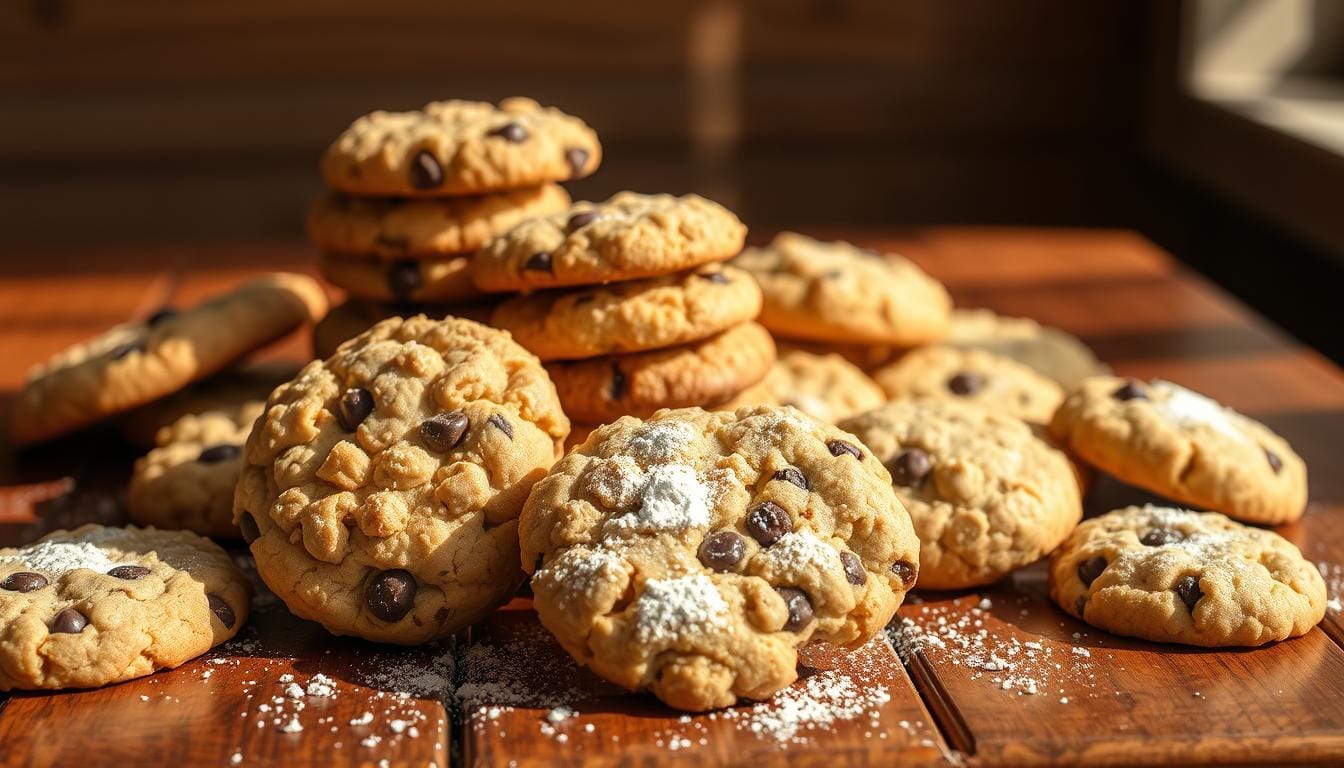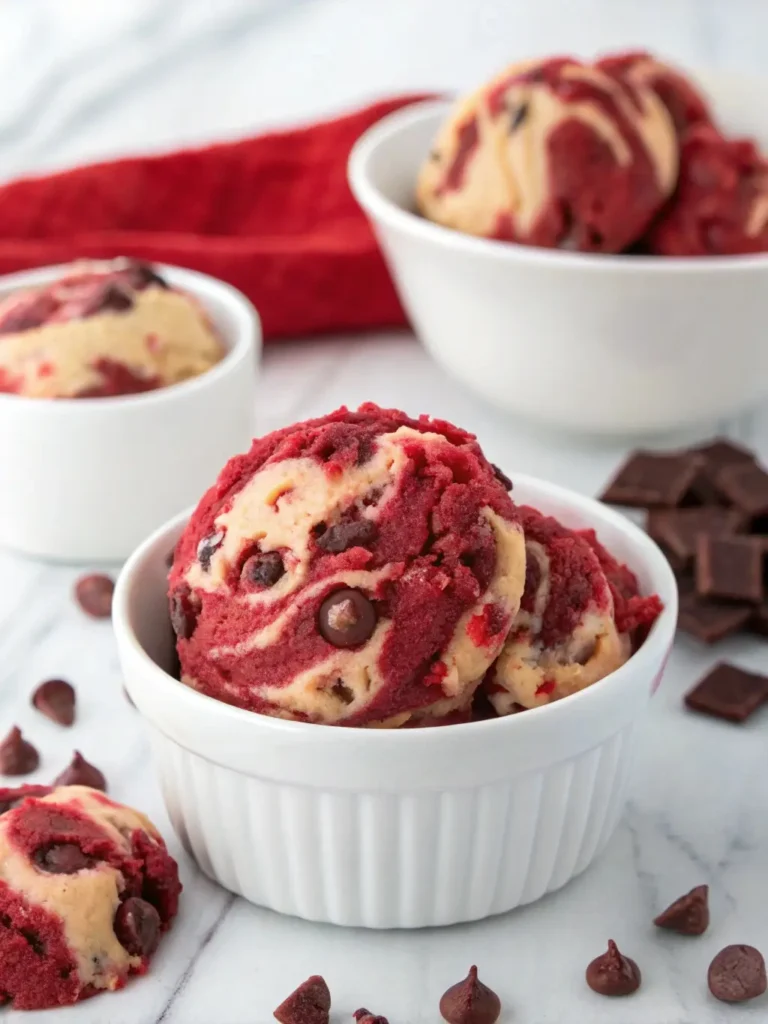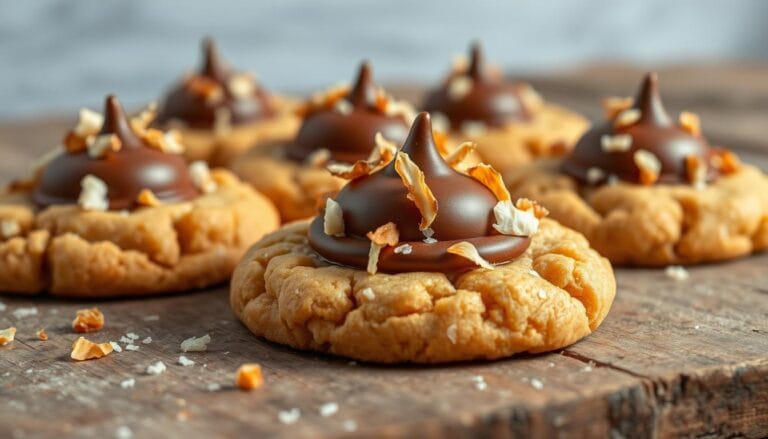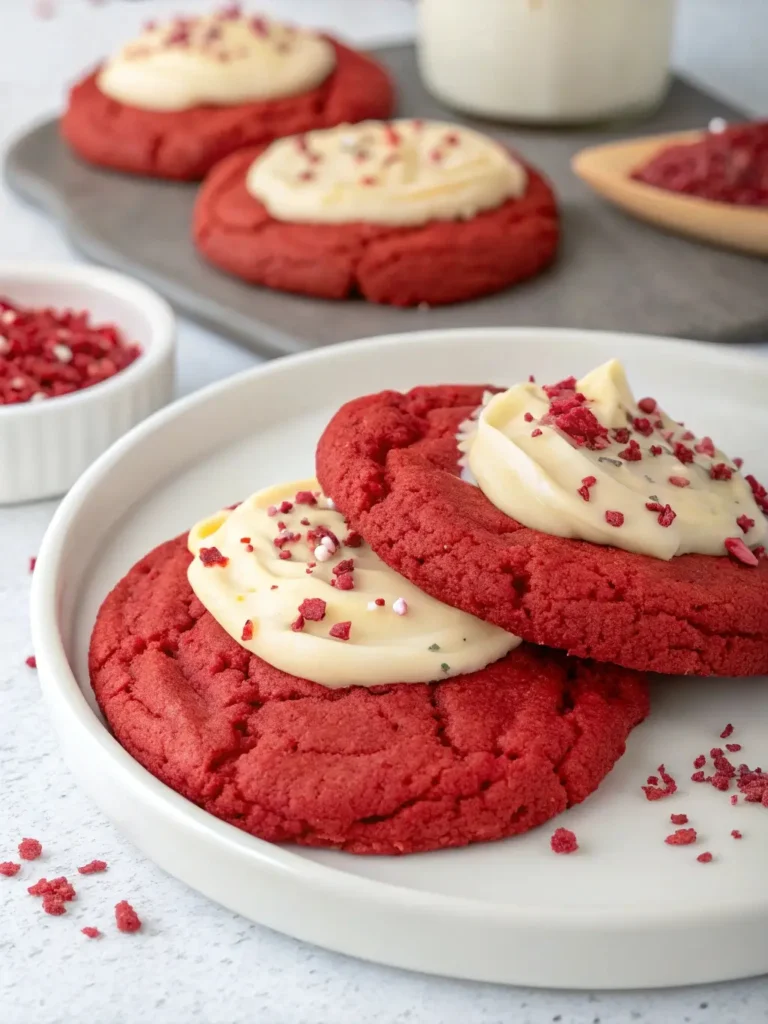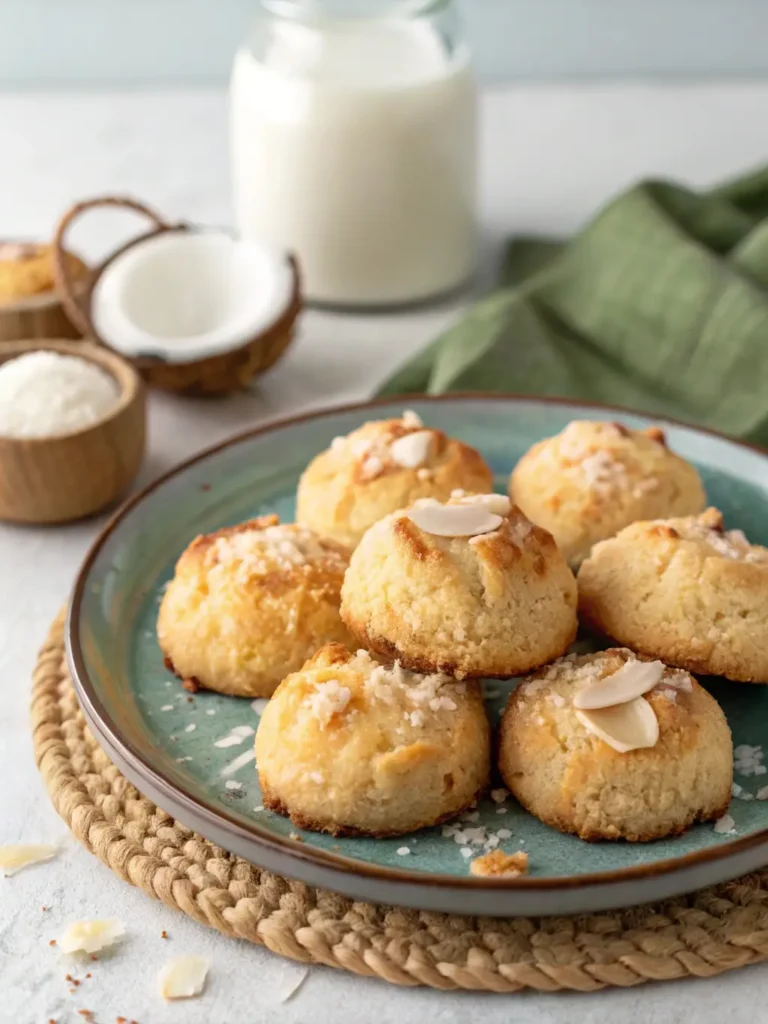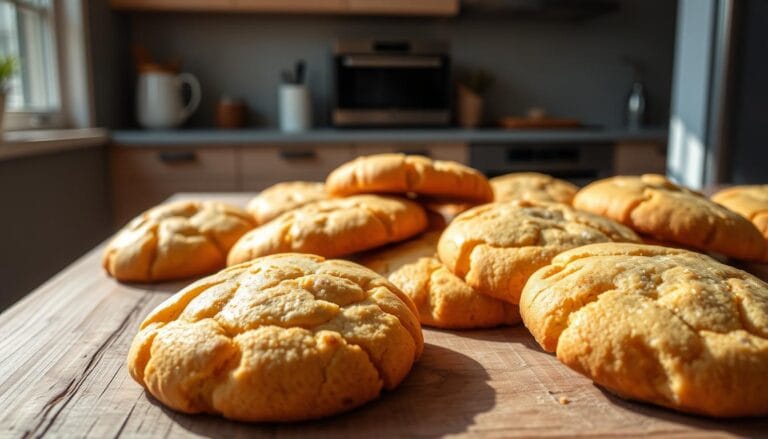How to Make Butter-Free Cookies – Tasty Dairy-Free Treat
butter-free cookies:
I love baking but often face dairy restrictions. I found a way to make delicious cookies without butter. My kitchen became a place for experimenting, turning traditional baking into dairy-free treats that everyone loves.
Ever craved cookies but had no butter? Dairy-free cookie recipes are more than a substitute. They’re a fun journey in the kitchen. These recipes use oils instead of butter, offering a new twist on old favorites.
Butter-free cookies can be just as tasty as the originals. With the right ingredients and techniques, you can make cookies that are both healthy and yummy.
Table of Contents
Key Takeaways
- Discover versatile dairy-free cookie baking methods
- Learn how to substitute butter with alternative ingredients
- Explore health-conscious baking techniques
- Create delicious cookies for various dietary needs
- Understand the science behind oil-based cookie recipes
Understanding Oil-Based Cookie Alternatives
Exploring butter-free cookies recipes opens up a world of delicious possibilities. Oil-based alternatives offer exciting opportunities for healthier and more versatile cookie options.
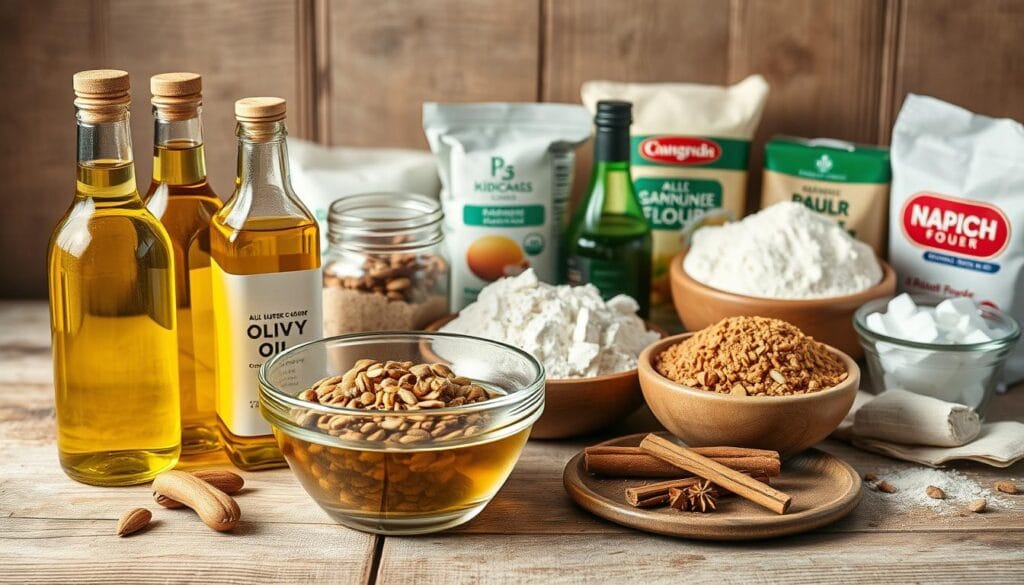
When diving into butter-free baking, you’ll find many benefits. Oil is an excellent ingredient for creating tasty treats. The right oil can make your baking experience better and offer unique advantages.
Benefits of Using Oil Instead of Butter
- Reduces saturated fat content
- Provides moisture to cookie dough
- Enables easier mixing and preparation
- Creates softer cookie textures
- Supports various dietary restrictions
Types of Oils Suitable for Baking
| Oil Type | Flavor Profile | Best Used In |
|---|---|---|
| Canola Oil | Neutral | Chocolate chip cookies |
| Coconut Oil | Subtle sweet | Tropical-inspired cookies |
| Olive Oil | Mild fruity | Savory or Mediterranean cookies |
Health Benefits of Butter-Free Cookies
Butter-free baking offers significant health advantages. Vegan cookie recipes using oil can lower cholesterol and reduce calories. They also meet different dietary needs. People with dairy allergies or those seeking plant-based options will find these baking techniques innovative.
Choosing neutral-flavored oils like corn or canola lets you make delicious cookies without losing taste. Try different oils to find your favorite butter-free baking method!
Essential Ingredients for No-Butter Cookies
Making tasty egg-free cookies is all about the right ingredients. You’ll need some special items to make treats without butter. Your pantry should have these key items for success.
Great egg-free cookies start with quality ingredients. Vegetable oil is a top choice for baking. It adds moisture and makes the cookies tender and tasty.
- Vegetable Oil: Primary fat replacement
- All-Purpose Flour: Structural base
- Granulated Sugar: Sweetness and texture
- Baking Soda: Leavening agent
- Salt: Flavor enhancer
- Vanilla Extract: Depth of flavor
If you want egg-free cookies, here are some good substitutes:
- Applesauce: Adds moisture and binds
- Mashed Banana: Sweetens and replaces eggs
- Ground Flaxseed: Binds and adds nutrition
Choosing the right ingredients changes your baking. Your butter-free cookies can be just as good as the originals. Plus, they fit many diets.
Cookie Recipes Without Butter: Basic Techniques
Making tasty healthy cookie recipes needs you to know some basic baking skills. Oil-based cookies need careful attention to get the right texture and taste. Learning these basic methods will make your baking better.
Proper Mixing Methods
When making oil-based cookies, how you mix is very important. An electric mixer is best because it mixes ingredients well and evenly. Here are some tips for mixing:
- Mix dry ingredients separately before adding wet ingredients
- Use medium speed for 1-2 minutes to mix well
- Scrape down the mixer sides to mix everything evenly
Temperature Control Tips
Keeping the right temperature is key for healthy cookies. Different oils bake differently, so knowing about heat helps avoid problems like cookies spreading too much or cooking unevenly.
| Oil Type | Recommended Baking Temperature | Potential Issues |
|---|---|---|
| Vegetable Oil | 350°F | Potential excessive spread |
| Coconut Oil | 325°F | Risk of burning |
| Olive Oil | 340°F | Strong flavor impact |
Measuring and Portioning Guidelines
Being precise is crucial for oil-based cookies. Here are some tips for getting consistent results:
- Get accurate measuring cups and spoons
- Level dry ingredients with a straight edge
- Use a cookie scoop for even size and shape
- Place cookies evenly on the baking sheet
Learning these techniques will make your oil-based cookies stand out. With practice and patience, you’ll make delicious treats every time.
The Science Behind Oil-Based Cookie Dough
Exploring the science of non-dairy treats shows why oil-based cookies are different. Swapping butter for oil changes the dough’s chemistry. This affects how your plant-based desserts turn out.
Oil molecules work differently with other ingredients, leading to unique textures. Unlike butter, oil stays liquid at all temperatures. This changes how your cookies spread and bake.
- Oil disperses more evenly throughout the dough
- Creates smoother, more uniform texture
- Reduces potential for uneven baking
The dough’s temperature is key to its performance. Chilling oil-based dough for 30-60 minutes helps. It controls spread and keeps the cookies thick.
| Dough Temperature | Cookie Characteristics |
|---|---|
| Room Temperature | More Spread, Thinner Cookies |
| Chilled (30-60 mins) | Less Spread, Thicker Cookies |
Knowing these scientific facts helps you make amazing non-dairy treats. They can be just as good as traditional butter-based cookies.
Mixing and Preparation Techniques
Making tasty cookies without butter needs special mixing and prep methods. The right way can make your dairy-free cookies stand out. Knowing how to handle your dough is key for the perfect texture and taste.
Electric Mixer vs Hand Mixing
Your mixing method is very important when making cookie recipes without butter. An electric mixer has many benefits:
- It mixes ingredients well
- It does it fast
- It makes the dough even
- It saves you from hard work
Dough Consistency Guidelines
Getting the dough right is crucial in dairy-free cookie baking. Your dough should be:
| Consistency Indicator | Ideal Characteristics | Correction Method |
|---|---|---|
| Moisture Level | Slightly sticky but not wet | Add flour gradually |
| Texture | Holds shape when scooped | Chill dough if too soft |
| Mixing Duration | 1-2 minutes maximum | Stop when ingredients combine |
Chilling Requirements
Chilling your dairy-free cookie dough is a must. Cold dough prevents excessive spreading and improves flavor. Chill your dough for 30-60 minutes before baking for the best results.
Mastering these techniques will help you make delicious dairy-free cookies that everyone will love!
Baking Temperature and Timing Essentials
Getting the baking temperature right is key for delicious vegan cookies. The right heat can make your cookies go from good to amazing. Most oil-based cookies need a specific temperature to get that perfect golden-brown look.
The best baking temperature for most vegan cookies is around 375°F (191°C). This temperature helps your cookies get a crispy outside and a soft inside. Timing is just as important as temperature.
- Bake for 9-11 minutes for standard-sized cookies
- Watch for golden-brown edges as a key doneness indicator
- Adjust time based on cookie thickness and size
Different ovens can have different temperatures, so use an oven thermometer for accuracy. For healthy cookies, being precise is important. Smaller cookies need less time, while bigger or thicker ones might need a bit more.
Pro tip: Take butter-free cookies out of the oven when they look a bit underbaked. They’ll cook a bit more on the hot baking sheet, giving them the perfect texture for your vegan cookies.
Troubleshooting Common Issues
Creating perfect oil-based cookies can be tough, but with the right methods, you can beat common baking problems. Butter-free baking needs careful attention and special strategies for tasty results.
Preventing Spread and Thinning
Oil-based cookies often spread too much. Here are some tips to stop this:
- Chill the dough for at least 30 minutes before baking
- Use room temperature baking sheets
- Measure ingredients precisely
- Avoid pressing dough patties too flat
- Check that your baking soda is fresh
Fixing Texture Problems
Getting the right texture in butter-free cookies can be hard. Different oils change cookie texture in different ways:
| Oil Type | Texture Impact | Best Uses |
|---|---|---|
| Vegetable Oil | Softer texture | Chewy cookies |
| Coconut Oil | Firmer structure | Crisp cookies |
| Olive Oil | Moisture retention | Soft, dense cookies |
Storage Solutions
Keeping your butter-free cookies fresh is key. Airtight containers are your best ally in keeping them fresh and preventing texture changes.
- Store at room temperature for up to 5 days
- Use sealed containers with parchment between layers
- Refrigerate for longer shelf life
- Freeze for extended storage up to 3 months
By using these tips, you’ll get better at butter-free baking. You’ll make delicious oil-based cookies every time.
Creative Variations and Add-ins
Making your butter-free cookies into exciting desserts is simple. Try different mix-ins and flavors to create unique treats. These non-dairy delights will be a hit with everyone.
Here are some creative add-in ideas to make your cookies special:
- Chocolate Chip Medley: 50% dark chocolate chips and 50% white chocolate chips
- Fruit and Nut Fusion: 50% dried cranberries and 50% chopped almonds
- Tropical Twist: 50% golden raisins and 50% coconut flakes
- Sweet and Salty: 50% butterscotch chips and 50% pretzel pieces
Here are some tips for adding mix-ins to your desserts:
- Chop larger ingredients into smaller pieces for even distribution
- Lightly coat add-ins in flour to prevent sinking during baking
- Don’t overload the dough – keep a balanced mix of add-ins
| Add-in Category | Recommended Quantity | Flavor Profile |
|---|---|---|
| Chocolate Chips | 1/2 cup per batch | Rich and Sweet |
| Dried Fruits | 1/3 cup per batch | Tangy and Chewy |
| Nuts | 1/4 cup per batch | Crunchy and Nutty |
Remember, creativity is the key to making your own unique treats. Don’t be afraid to try new things. You might just find your favorite butter-free cookies
Conclusion
Exploring different fats for baking opens up a world of tasty possibilities. You’ve learned that making egg-free cookies without butter is easy and delicious. These treats meet many dietary needs.
What you’ve learned is more than just swapping ingredients. You’ve grasped the science of baking with oils. This lets you make cookies that are moist, full of flavor, and just right.
Whether you’re avoiding certain foods or just want to try something new, these methods are perfect. They let you get creative in the kitchen.
Your baking journey is just starting. Every recipe you try helps you get better and try new flavors. From coconut oil chocolate chip cookies to olive oil shortbread, there’s so much to explore.
Great baking is about passion, creativity, and a love for learning. The skills you’ve gained will help you make treats that everyone can enjoy. This is true, no matter their dietary needs or preferences.
FAQ
Why would I want to make cookies without butter?
Making cookies without butter can help you eat less saturated fat. It’s also good for those who can’t eat dairy or want to manage their cholesterol. Oil-based cookies are just as tasty and can meet different dietary needs.
What oils work best for making cookies?
Canola, vegetable, and grapeseed oils are great for cookies. Coconut or olive oil can add extra flavor. Pick an oil that fits the cookie’s taste and texture.
How do oil-based cookies differ from butter-based cookies?
Oil-based cookies are softer and more tender. They have less crisp edges than butter cookies. They stay moist longer and mix easier.
Can I substitute oil directly for butter in my existing cookie recipes?
Not always. You might need to adjust the recipe when substituting oil for butter. Use about 3/4 cup of oil for every 1 cup of butter. You might also need to change other ingredients.
Are cookies without butter healthier?
They can be, depending on the oil. Vegetable oils have less saturated fat than butter. Olive oil is good for your heart. But, they still have calories, so eat them in moderation.
How do I prevent oil-based cookies from becoming too greasy?
Use quality oils and measure them carefully. Chill the dough to control spread. Mix lightly and avoid over-mixing. Adding flour and oats can help manage oil.
Can I make vegan cookies using oil?
Yes! Oil-based cookies are often vegan. Use ground flaxseed, chia seeds, applesauce, or egg replacers for eggs. Many plant-based oils are perfect for vegan cookies.
How should I store oil-based cookies?
Store them in an airtight container at room temperature for 3-5 days. They might soften faster than butter cookies. To keep them crisp, store with bread or in a container with a tight lid.

